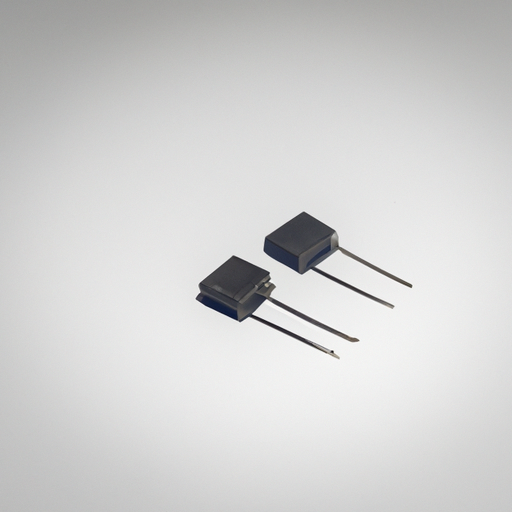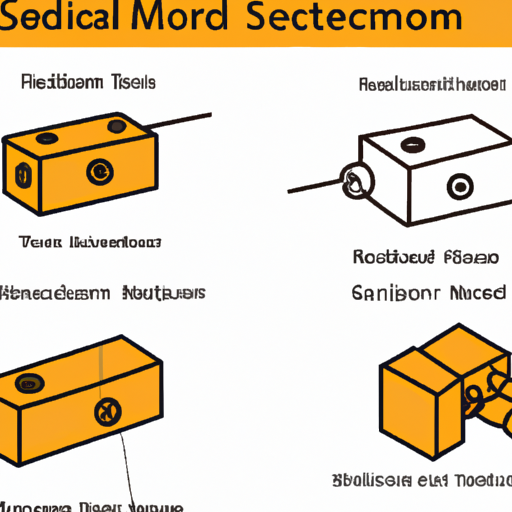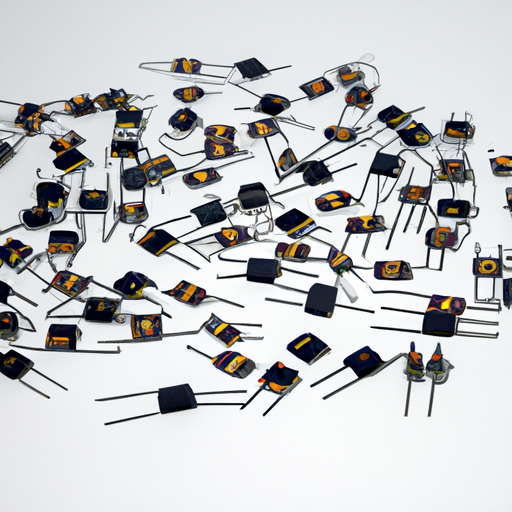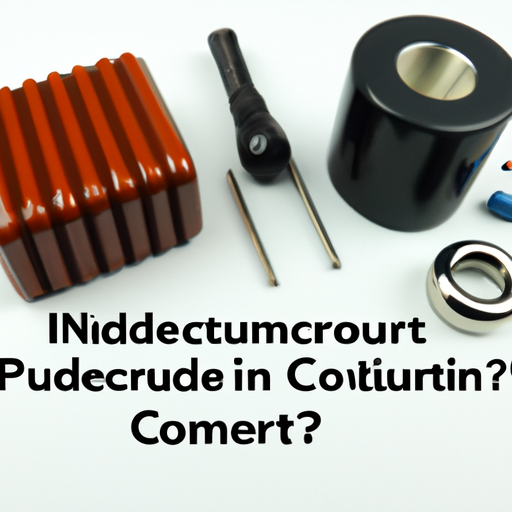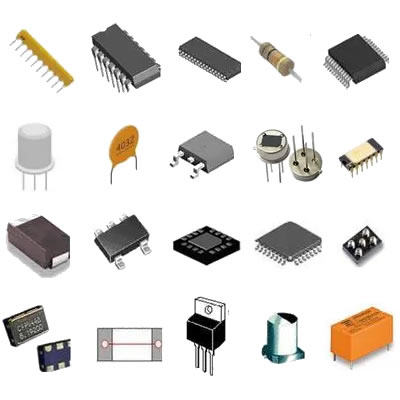What are the popular chip inductor models?
What are the Popular Chip Inductor Models?
I. Introduction
A. Definition of Chip Inductors
Chip inductors are passive electronic components that store energy in a magnetic field when electrical current flows through them. They are compact, surface-mount devices that are widely used in various electronic circuits. Unlike traditional inductors, which can be bulky and require more space, chip inductors are designed to fit into smaller spaces, making them ideal for modern electronics.
B. Importance of Chip Inductors in Electronics
Chip inductors play a crucial role in electronic circuits by filtering signals, managing power supply, and enabling radio frequency (RF) applications. Their ability to store and release energy makes them essential for applications ranging from power management systems to communication devices. As technology advances and devices become more compact, the demand for efficient and reliable chip inductors continues to grow.
C. Overview of the Article
This article will explore the various types of chip inductors, popular models from leading manufacturers, their applications, and factors to consider when selecting them. Additionally, we will discuss future trends in chip inductor technology, providing a comprehensive overview of this vital component in modern electronics.
II. Understanding Chip Inductors
A. Basic Principles of Inductance
1. Definition of Inductance
Inductance is the property of an electrical conductor that opposes changes in current. When current flows through a coil of wire, it generates a magnetic field around it. If the current changes, the magnetic field also changes, inducing a voltage in the coil that opposes the change in current. This phenomenon is known as self-inductance.
2. How Inductors Work
Inductors work by storing energy in the magnetic field created by the flow of current. When the current is steady, the inductor stores energy. When the current decreases, the inductor releases the stored energy back into the circuit. This ability to store and release energy makes inductors essential for smoothing out fluctuations in current and voltage.
B. Types of Chip Inductors
1. Ferrite Core Inductors
Ferrite core inductors are made with a ferrite material that enhances inductance and reduces losses at high frequencies. They are commonly used in power supply circuits and RF applications due to their efficiency and compact size.
2. Air Core Inductors
Air core inductors do not use a magnetic core, relying instead on the air surrounding the coil to provide inductance. They are typically used in high-frequency applications where low losses are critical.
3. Composite Core Inductors
Composite core inductors combine materials to optimize performance. They can offer a balance between high inductance and low losses, making them suitable for various applications.
C. Key Specifications
1. Inductance Value
The inductance value, measured in henries (H), indicates how much energy the inductor can store. It is a critical specification that determines the inductor's performance in a circuit.
2. Current Rating
The current rating indicates the maximum current the inductor can handle without overheating or saturating. Exceeding this rating can lead to failure or reduced performance.
3. DC Resistance (DCR)
DC resistance is the resistance of the inductor when a direct current flows through it. Lower DCR values are preferred as they result in less power loss and improved efficiency.
4. Self-Resonant Frequency (SRF)
The self-resonant frequency is the frequency at which the inductor's reactance equals its resistance, causing it to behave like a resistor. It is essential to consider SRF when designing circuits to avoid unwanted resonances.
III. Popular Chip Inductor Models
A. Murata Models
1. LQW Series
The LQW series from Murata is known for its compact size and high performance. These inductors are suitable for RF applications and power supply circuits, offering a wide range of inductance values.
2. LQG Series
The LQG series features low DCR and high current ratings, making them ideal for power management applications. Their small footprint allows for easy integration into compact designs.
B. TDK Models
1. MLP Series
TDK's MLP series inductors are designed for high-frequency applications. They offer excellent performance with low losses, making them suitable for RF and power supply circuits.
2. VLF Series
The VLF series is known for its high current ratings and low DCR. These inductors are ideal for power supply applications, providing reliable performance in compact designs.
C. Coilcraft Models
1. 0805CS Series
Coilcraft's 0805CS series is a popular choice for surface-mount applications. These inductors offer a balance of size and performance, making them suitable for various electronic devices.
2. 1008CS Series
The 1008CS series provides higher inductance values and current ratings, making them ideal for power management and filtering applications.
D. Vishay Models
1. IHLP Series
Vishay's IHLP series inductors are known for their low profile and high current handling capabilities. They are widely used in power supply circuits and offer excellent thermal performance.
2. 1210 Series
The 1210 series is designed for high-frequency applications, providing low DCR and high inductance values. These inductors are suitable for RF and signal processing applications.
E. Bourns Models
1. SRF Series
Bourns' SRF series inductors are designed for RF applications, offering low losses and high performance. They are ideal for communication devices and other high-frequency applications.
2. 0603 Series
The 0603 series is a compact option for surface-mount applications, providing reliable performance in a small package. These inductors are suitable for various electronic devices.
IV. Applications of Chip Inductors
A. Power Supply Circuits
Chip inductors are commonly used in power supply circuits to filter and smooth out voltage fluctuations. They help maintain a stable output voltage, ensuring the reliable operation of electronic devices.
B. RF Applications
In RF applications, chip inductors are used for tuning and filtering signals. Their ability to handle high frequencies makes them essential for communication devices, including radios and smartphones.
C. Filtering Applications
Chip inductors are used in filtering applications to remove unwanted noise from signals. They work in conjunction with capacitors to create low-pass, high-pass, and band-pass filters.
D. Signal Processing
In signal processing applications, chip inductors help manage signal integrity and reduce interference. They are used in various devices, including audio equipment and data transmission systems.
V. Factors to Consider When Choosing Chip Inductors
A. Application Requirements
When selecting chip inductors, it is essential to consider the specific requirements of the application, including inductance value, current rating, and frequency range.
B. Size and Form Factor
The size and form factor of the inductor are critical, especially in compact designs. Choosing the right size ensures that the inductor fits within the available space without compromising performance.
C. Environmental Considerations
Environmental factors, such as temperature and humidity, can affect the performance of chip inductors. It is essential to select inductors that can withstand the operating conditions of the application.
D. Cost vs. Performance Trade-offs
Balancing cost and performance is crucial when selecting chip inductors. While high-performance inductors may offer better efficiency, they can also be more expensive. Evaluating the trade-offs is essential for making informed decisions.
VI. Future Trends in Chip Inductor Technology
A. Miniaturization
As electronic devices continue to shrink in size, the demand for smaller chip inductors is increasing. Manufacturers are focusing on miniaturization without compromising performance.
B. Enhanced Performance Characteristics
Future chip inductors are expected to offer enhanced performance characteristics, including lower DCR, higher current ratings, and improved thermal management.
C. Integration with Other Components
There is a growing trend towards integrating chip inductors with other components, such as capacitors and resistors, to create more compact and efficient solutions.
D. Sustainability and Eco-Friendly Materials
As the electronics industry moves towards sustainability, manufacturers are exploring eco-friendly materials for chip inductors. This trend aims to reduce the environmental impact of electronic devices.
VII. Conclusion
A. Recap of Key Points
Chip inductors are essential components in modern electronics, providing critical functions in power management, RF applications, and signal processing. Understanding the various types, specifications, and popular models can help engineers and designers make informed decisions.
B. The Role of Chip Inductors in Modern Electronics
As technology continues to evolve, chip inductors will play an increasingly vital role in enabling compact, efficient, and reliable electronic devices. Their importance in various applications cannot be overstated.
C. Encouragement for Further Research and Exploration
For those interested in exploring chip inductors further, numerous resources are available, including manufacturer datasheets, academic journals, and industry reports. Continued research and exploration will lead to a deeper understanding of this critical component in electronics.
VIII. References
A. Academic Journals
- IEEE Transactions on Power Electronics
- Journal of Applied Physics
B. Manufacturer Datasheets
- Murata Manufacturing Co., Ltd.
- TDK Corporation
C. Industry Reports
- MarketsandMarkets: Inductor Market Report
- Research and Markets: Global Inductor Market Analysis
D. Online Resources and Articles
- Digi-Key Electronics Blog
- Mouser Electronics Technical Articles
This comprehensive exploration of chip inductors highlights their significance in modern electronics, popular models, and future trends, providing valuable insights for engineers and enthusiasts alike.

